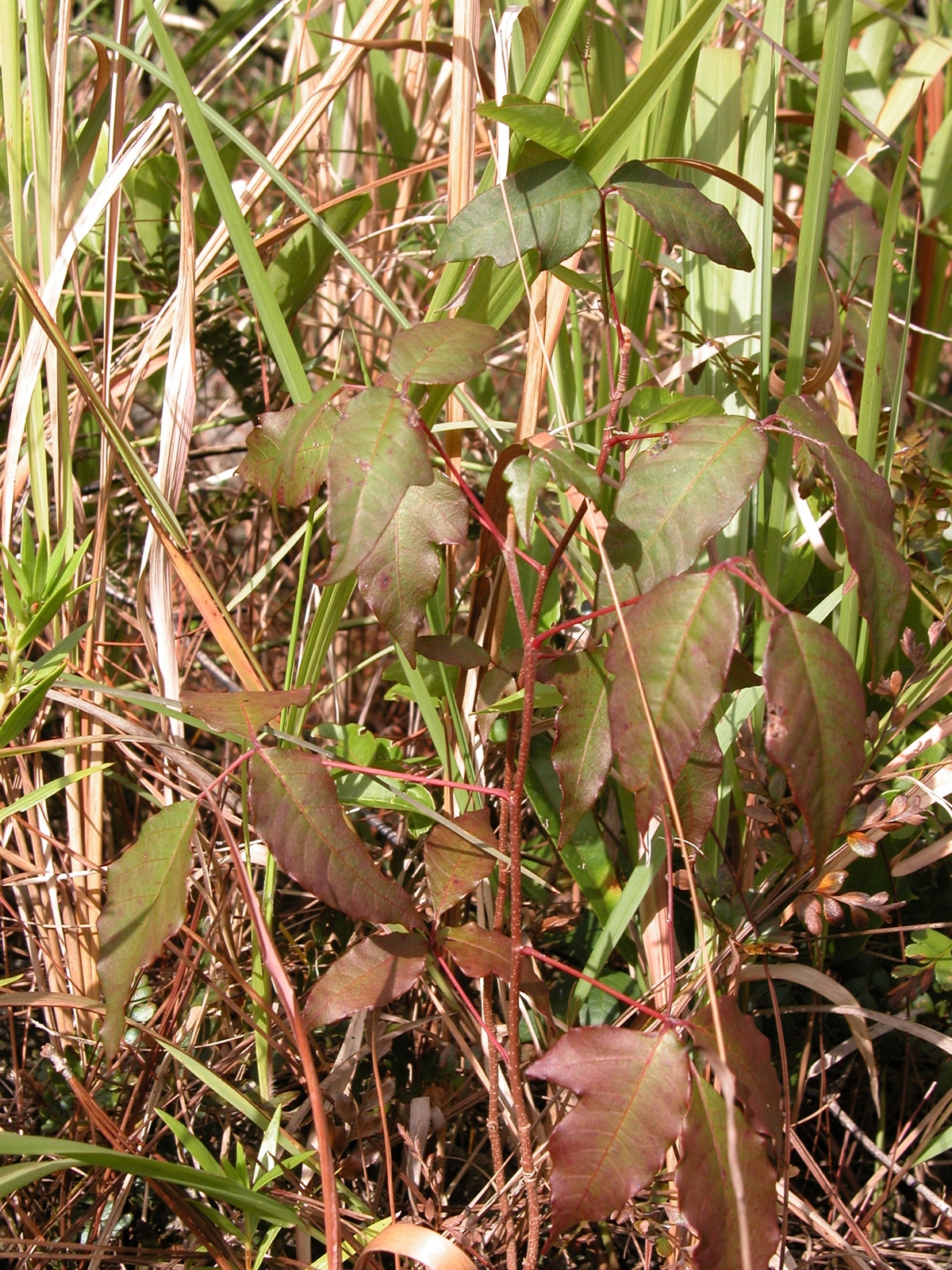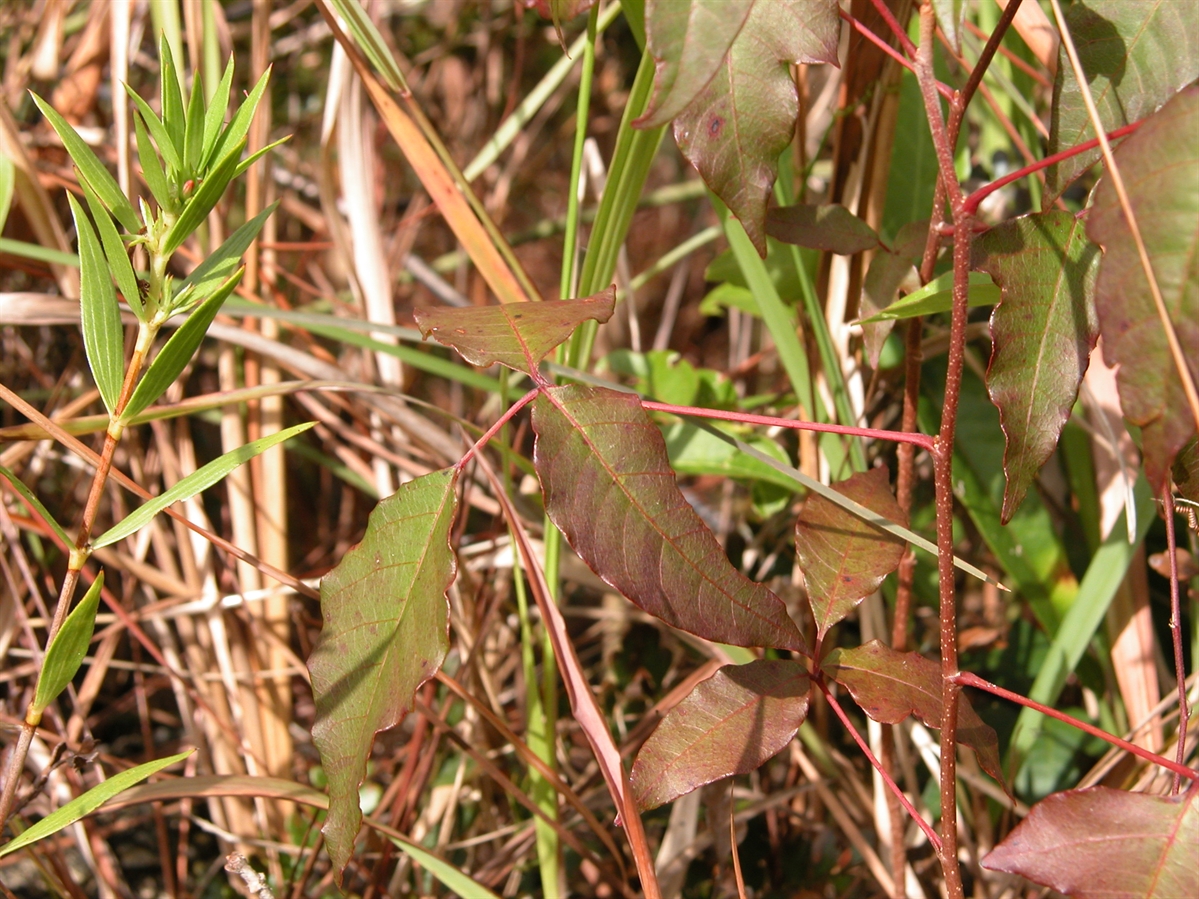Habit: Toxicodendron radicans grows as a woody/bushy vine up to 8 meters. The trifoliate leaves are arranged alternately. The leaflets ovate, with an entire to dentate margin, acute leaf apex and to 15 cm in length. The larger terminal leaflet petiolate and the smaller side leaflets sessile.
Toxicodendron radicans is monoecious. The incomplete, imperfect, actinomorphic flowers are arranged in panicles in leaf axils. The calyx has 5 green, unfused sepals. The corolla has 5 white, unfused petals. In staminate flowers, there are 5 unfused stamens and a non-functional carpel. In carpellate flowers there are 5 staminodes and a superior ovary with 1 locule and 1 ovule. The fruit is a white drupe at maturity.
Habitat: Toxicodendron radicans grows in Dry Broadleaf Evergreen Formations – Forests/Shrublands (coppice) and Pine Woodlands.
Distribution: Toxicodendron radicans occurs in the northern pine islands of the Lucayan Archipelago, Bermuda, Mexico, Central America and parts of the eastern and southern United States.
Medicinal/Cultural/Economic usage: Toxicodendron radicans is not known to be used medicinally in the Lucayan Archipelago.
The vegetation is toxic and contact with it will cause extreme dermatitis.

